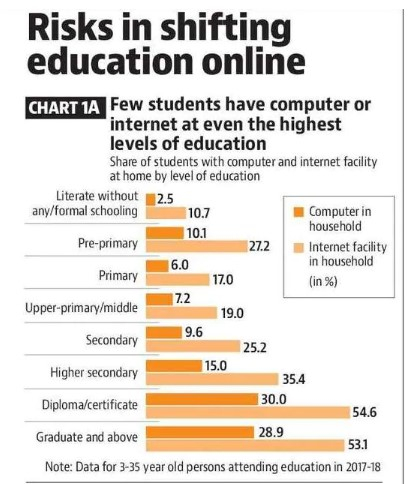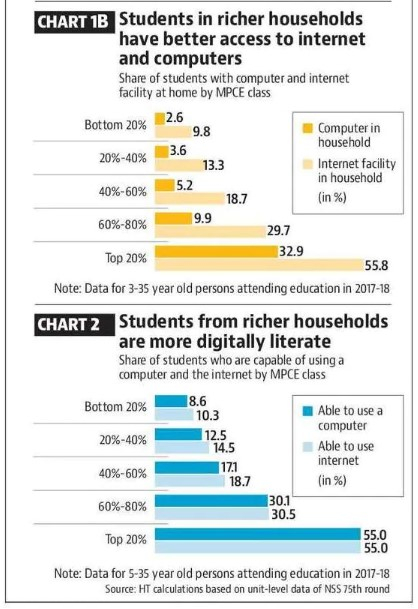Contents
- Relief for borrowers in moratorium case
- Many parents take children out of private schools
- The ‘rice of diabetes’: an undeniable link
- Plea in SC on secular marriage law
RELIEF FOR BORROWERS IN MORATORIUM CASE
Focus: GS-III Indian Economy
Why in news?
The Supreme Court directed banks that loan accounts on the clear till the expiry of the moratorium on August 31 should not be declared as non-performing assets (NPAs) till further orders.
Details
- The Supreme Court spelt relief for borrowers struggling to gain their feet amid a pandemic with its one-liner that “accounts which were not declared NPA till August 31, 2020 shall not be declared NPA till further orders”.
- The direction was triggered by an assurance from senior advocate Harish Salve, on behalf of the bankers, that “no account shall become NPA atleast for a period of two months”.
- The order was passed amidst apprehensions raised by individual borrowers and representatives of various commerical sectors on whether their loans would be declared NPAs after the expiry of the moratorium.
- The court is examining the question whether compound interest (interest on interest) should be charged on loans deferred during the moratorium period.
- The Bench is also examining the powers of the Centre and the National Disaster Management Authority to provide relief to borrowers reeling under the financial effects of the pandemic.
Borrowers’ demand
- Borrowers are seeking a full waiver of interest chargeable during the moratorium.
- Loan accounts became NPAs only if payments were not made for 90 days. The moratorium period was excluded from 90 days.
- It was assured in the court that Accounts do not become NPAs at the end of the moratorium.
Recently in news:
- The Supreme Court criticised the Centre for “hiding behind the Reserve Bank of India” without making its stand clear on the loan moratorium scheme introduced during the COVID-19 pandemic.
- The court wanted to know whether the deferment of loan interest to prop up borrowers through their financial crisis during the national lockdown would lead to accrual of further interest once the freeze was lifted on August 31.
- Noting that the issue had been pending indecisively for some months now, the court advised the government against adopting a blinkered vision, focussing only on matters of business of banks and not looking to the plight of people financially dented by the “problems created by your lockdown”.
- The court said the government was empowered to take an independent stand under the Disaster Management Act.
- The debate was sparked by the RBI’s response in court that it would be imprudent to go for a forced waiver of interest, risking the financial viability of the banks it was mandated to regulate and putting the interests of the depositors in jeopardy.
- The court had been trying to strike a balance between the interests of the banks and the borrowers.
-Source: The Hindu
MANY PARENTS TAKE CHILDREN OUT OF PRIVATE SCHOOLS
Focus: GS-II Social Justice
Why in news?
Many parents have decided to take their children out of private schools for the current academic year – showing dislike towards online classes which have become the new norm.
Details
- While some parents say they want to give their children a ‘gap year’ during the pandemic, others who are unhappy with the online mode of teaching have decided to home-school their children.
- Financial constraints or a worry that too much screen time will have a negative impact are the other factors at play here.
- There is also the concern that it is not feasible for working parents to supervise their children during online classes.
- Many families also say that they have no choice but to remove their children from school as their salaries have taken a hit or they have lost their jobs.
The Gap: Inequality in Online education
- Three-fourths of students in India did not have access to the internet at home, according to a 2017-18 all-India NSO survey.
- The share of those who did not have computers, including devices such as palm-tops and tablets, was much greater ~90%.
- Access to these facilities was higher among students at higher levels of education. But even at the highest levels, a large share of students did not have access to these facilities. As expected, access to the internet and computers is directly related to household incomes.
- Lack of access to the internet and devices has also created a gap in digital literacy.
- As many as 76% of students in India in the 5-35 age group did not know how to use a computer.
- The share of those who did not know how to use the internet was 74.5%. Once again, this gap rises with a fall in income levels.
- 55% of students among the top 20% of households by monthly per capita expenditure (MPCE) knew how to use a computer and internet while these proportions were only 9% and 10% among the bottom 20%.


-Source: The Hindu
THE ‘RICE OF DIABETES’: AN UNDENIABLE LINK
Focus: GS-III Science and Technology
Why in news?
Higher consumption of white rice regularly is associated with an increased risk of diabetes, observes a study conducted in 21 countries.
Details
- The highest risk, according to the paper, was seen in South Asia, which had the highest consumption of white rice.
- This is the largest study on white rice intake and incident diabetes ever done.
- It is also one of the first to be done across different countries and confirms that white rice intake is one of the contributors to the diabetes epidemic in South Asia.
- The study acknowledges the role of reduced physical activity as a contributing factor, as also increase in obesity rates, while it does adjust for various other diabetogenic factors, including family history.
- However, the recommendation is not to stop eating white rice completely, rather to cut down the consumption and replace it with proteins.
Diabetes
- Diabetes is a metabolic disease that causes high blood sugar. The hormone insulin moves sugar from the blood to cells to be stored or used for energy.
- With diabetes, body either doesn’t make enough insulin or can’t effectively use the insulin it does make.
- Untreated high blood sugar from diabetes can damage nerves, eyes, kidneys, and other organs.
Different types of diabetes:
- Type 1 diabetes: It is an autoimmune disease. The immune system attacks and destroys cells in the pancreas, where insulin is made. It’s unclear what causes this attack. About 10 percent of people with diabetes have this type.
- Type 2 diabetes: It occurs when body becomes resistant to insulin, and sugar builds up in your blood. It stems from a combination of genetics and lifestyle factors.
- Pre-diabetes: It occurs when blood sugar is higher than normal, but it’s not high enough for a diagnosis of type 2 diabetes.
- Gestational diabetes: It is high blood sugar during pregnancy. Insulin-blocking hormones produced by the placenta cause this type of diabetes.
-Source: The Hindu
PLEA IN SC ON SECULAR MARRIAGE LAW
Focus: GS-II Polity
Why in news?
A secular marriage law that makes accessible to all and sundry the personal details, including mobile phone numbers, of adults who want to enter wedlock has come under challenge in the Supreme Court.
Details
- Certain provisions of the Special Marriage Act require the intimate details of the couple to be published for 30 days at the Marriage Registrar’s office.
- The details include their names, date of birth, age, occupation, parents’ names and details, address, pin code, identity information, phone number, etc. This is a peculiar requirement of the Act.
- The provisions in the Act allow anyone to submit objections to the marriage if they come to know of it through this public notice. The Marriage Officer is empowered to inquire into these objections.
- Publication of confidential details through a public notice had a chilling effect on the right to marry, particularly in the backdrop of honour killings and violence committed against those who entered inter-caste and inter-religious marriages.
- It argued that the requirement of notice before marriage was absent in the Hindu Marriage Act, 1955 and in the customary laws of Islam.
- Hence, the provision is discriminatory and violative of the right to equality.
Special Marriage Act, 1954
- The Special Marriage Act, 1954 is an Act of the Parliament of India enacted to provide a special form of marriage for the people of India and all Indian nationals in foreign countries, irrespective of the religion or faith followed by either party.
- Marriages solemnized under Special Marriage Act are not governed by personal laws.
The Act has 3 major objectives:
- to provide a special form of marriage in certain cases,
- to provide for registration of certain marriages and,
- to provide for divorce.
Applicability
- Any person, irrespective of religion.
- Hindus, Muslims, Buddhists, Jains, Sikhs, Christians, Parsis, or Jews can also perform marriage under the Special Marriage Act, 1954.
- Inter-religion marriages are performed under this Act.
- This Act is applicable to the entire territory of India and extends to intending spouses who are both Indian nationals living abroad.
- Indian national living abroad.
Succession to the property
- Succession to the property of person married under this Act or customary marriage registered under this Act and that of their children, are governed by Indian Succession Act.
- However, if the parties to the marriage are Hindu, Buddhist, Sikh or Jain religion, the succession to their property will be governed by Hindu succession Act.
- The Hindu Marriage Act is pertinent to Hindus, though the Special Marriage Act is appropriate to all residents of India regardless of their religion applicable at Court marriage.
-Source: The Hindu





